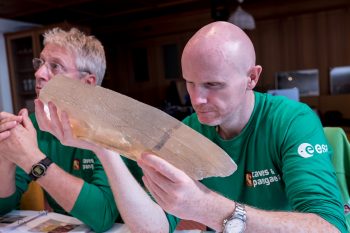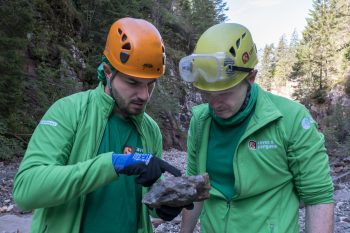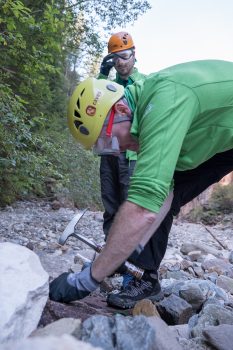Until now, Aidan Cowley was pretty much focused on the Moon. He works at ESA investigating technologies and concepts for future lunar missions, such as 3D printing and energy generation. He joined Pangaea’s journey last year as an observer, and he is now back as a trainee. Without having left Earth – yet – this geology training makes him appreciate how special our planet is, and the story behind the rocks.
I work preparing astronauts and technology for missions to the Moon as part of the SpaceShip EAC programme, and because of that I have had some exposure to geology when dealing with the lunar environment.
One of the research topics that greatly interests me is in-situ resource utilisation – finding and using resources native to a planetary surface. I am fascinated by how we could use lunar resources, such as the loose fine-grained regolith material, to sustain human exploration.
What I have learned these two first weeks of training with Pangaea has really filled in the other 95% of information I really needed to add context to our work. Knowing the difference between a pyroclastic flow and an impact melt could radically change an oxygen extraction process, for example.
The story of these geological features allows us to better justify why exploration of the Moon is important. The geological history of the Moon can give us unprecedented insight into the history of our own planet, of our Solar System and the forces that shaped the world we inhabit today.
Geology walks and talks
The traverse into Bletterbach canyon has been a highlight. I was able to clearly read the different sedimentary and igneous layers there, including really cool features like ancient fossilised rivers and seabeds.
This drives home one of the great learning outcomes of Pangaea – being able to interpret the geology of a place and how it can tell the story. We also learned the correct language with which to discuss the location with geologists, and gained independence in taking samples and planning a traverse – now you know what to be on the lookout for.
My fellow trainees and myself are now discussing rocks we find around our hotel – even a granite counter top becomes the subject of a coffee break!
I have developed a much deeper understanding of both lunar and martian environments. It is deeply satisfying when you come across an explanation that links something you knew before with what is being taught to us.
Understanding how other planets have developed different to our own makes me appreciate just how special our own world is. Pangaea has given me an opportunity to reflect on what planetary geology means and how important it is to equip current and future explorers with these perspectives.
Who knew that hitting rocks with hammers could be so educational!
Aidan Cowley
Spaceship EAC lead, ESA science advisor




Discussion: no comments